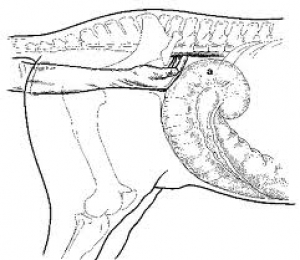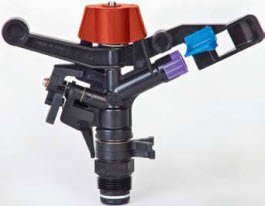Dairy Management
Pregnancy check

PREGNANCY
Fertilization
Fertilization is the union of an ovum and a spermatozoon to produce the first cell of an embryo. Fertilization takes place in the oviduct. The embryo enters the uterus two to three days after fertilization, but will not attach to the uterus wall (implantation) before about 28 days.
Implantation
In part, implantation consists of the formation of about 80 to 100 structures where fetal tissue (cotyledon) and maternal tissue (caruncles) fold together. After calving, if the caruncles and the fetal tissue fail to separate, the placenta cannot be expelled, leading to retained placenta. The process of implantation also includes the formation of the umbilical cord that allows exchange of nutrients and waste products between thematernal and fetal tissues. Implantation is usually completed by Day 45 of pregnancy.
Embryonic Death
Until implantation is complete, the risk of embryonic death is high. It is estimated that from 10 to 20% of all pregnancies end in embryonic death. If death of the embryo occurs within the first 17 or 18 days after fertilization, the cow will return to heat on a regular schedule and the producer may not know that the animal was pregnant. Later embryonic death will result in a delayed return to heat. In this case, the cow has an “apparent” heat cycle of 30 to 35 days. Thus embryonic death may easily be mistaken for a cow’s failure to conceive or come in heat.
Pregnancy Check
Common methods to detect pregnancy include non-return of heat, rectal palpation and milk progesterone levels. Each method has its advantages and disadvantages.
Non-Return to Heat
A cow not returning to heat 21 days after insemination may be presumed pregnant. However, a cow may not return to heat because of an ovarian cyst or failure to notice that the cow came in heat. Thus when no other diagnostic tools are available, a cow is usually declared pregnant if no heat has been observed for at least 60 days (the time of about three normal cycles).
Rectal Palpation
A veterinarian may use rectal palpation 40-60 days after insemination to detect the fetus in the uterus, other structures associated with pregnancy, and the presence of a corpus luteum on the ovary.
Milk Progesterone
During pregnancy, the heat cycle is interrupted because the corpus luteum persists and continues to secrete progesterone throughout the pregnancy. The persistence of progesterone in the milk 21 to 23 days after insemination may be used as a diagnostic tool for pregnancy.
Growth of the Fetus
Most fetal growth occurs in the last trimester of pregnancy (Days 190 to 282), during which time the fetal weight increases from about four kg to about 45 kg. Normal fetal growth requires nutrients and this increases the cow’s nutritional requirements, especially during the last two months of pregnancy.
Abortion
Abortion is the expulsion of a nonviable fetus before the normal term of pregnancy. Abortion of an implanted fetus occurs in 3 to 5% of pregnancies.
The major causes of abortion are:
• Insemination of a pregnant cow;
• Physical injuries (rough handling of pregnant cows);
• Ingestion of feed containing toxins, moldy feed, or feed with high levels of estrogen;
• Microbial infections (venereal diseases and other infections).
All cases of abortion should be viewed as potentially serious situations a rigorous efforts should be made to arrive at diagnoses. Bacterial (brucellosis, leptospirosis, listeriosis and vibriosis, etc.), viral (BVD, IBR), protozoal (trichomoniasis) or fungal infections cause abortion between the fourth and seventh months of pregnancy.

























